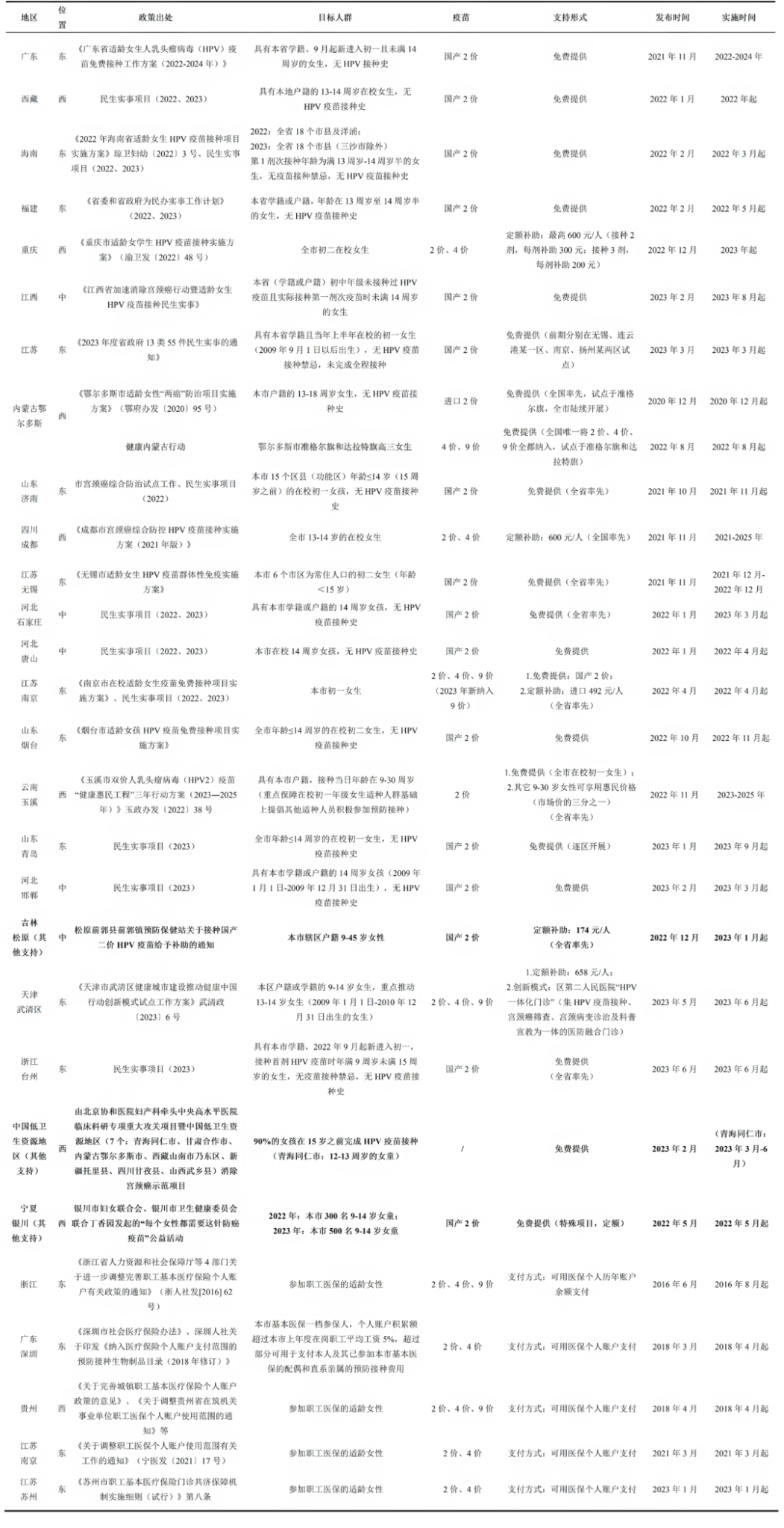Industry Updates
01
The National Medical Products Administration (NMPA) has approved the launch of the oral hexavalent reassortant live-attenuated rotavirus vaccine (Vero cell)
Recently, the National Medical Products Administration (NMPA) approved, through a priority review and approval process, the oral hexavalent reassortant live attenuated rotavirus vaccine (vero cell) (trade name: Wusheng Erlunbao) developed by Wuhan Institute of Biological Products Co., Ltd. The vaccine is indicated for infants aged 6 to 36 weeks and is the world’s first oral rotavirus vaccine covering six serotypes, offering broader-spectrum immune protection for this population in China and globally.
The vaccine is based on a bovine-origin UK-Compton strain (G6P[5]) as the backbone and incorporates reassorted human VP7 gene fragments, covering serotypes G1, G2, G3, G4, G8, and G9. Compared with currently available global mainstream vaccines, it uniquely includes G8 and G9 serotypes to better match circulating strains in China and parts of Africa. Phase 3 clinical trial data showed that the overall protective efficacy against rotavirus gastroenteritis (RVGE) of any severity caused by these six vaccine serotypes was 69.2%, while efficacy against severe RVGE reached 91.4%, and protection against hospitalization was 89.2%. For natural infection from “any serotype,” protective efficacy remained high at 62.9% for RVGE, 85.5% for severe RVGE, and 83.7% for hospitalization. In terms of immunogenicity, after three doses, seroconversion rates for the six serotypes ranged from 77% to 84%. Safety assessments indicated comparable overall adverse event rates between the vaccine and placebo groups, with common reactions being mild fever and diarrhea. There was no statistically significant difference in the incidence of serious adverse events; intussusception was extremely rare, with one case reported in each group, both of which fully resolved.
News Source: Hubei Daily
Clinical Evidence: https://doi.org/10.1016/j.virs.2022.07.011
Journal Article Recommendation
01
Healthcare workers’ attitudes toward influenza vaccine prescriptions in China
This article, authored by Feng Luzhao, Yi Heya, and colleagues, was published in Global Health Research and Policy and is based on a national cross-sectional survey conducted through the expert opinion collection platform of the 2024 World Influenza Congress between July 3 and July 10, 2024. The study aimed to investigate the current status, willingness, and influencing factors related to influenza vaccine prescription among healthcare workers (HCWs) in China, providing evidence to optimize prescription policy design and improve vaccine coverage. A total of 3,140 valid responses were collected from both hospital and community healthcare facilities using a multi-stage stratified sampling method to ensure representativeness.
The survey results showed that 68.8% (778/1,131) of hospital HCWs expressed willingness to prescribe influenza vaccines, compared to 61.9% (1,243/2,009) among community HCWs. Analysis of influencing factors revealed that HCWs with a history of influenza vaccination were more likely to provide prescriptions (adjusted odds ratio [aOR] = 0.30, 95% CI: 0.23–0.39, P < 0.001). Incentive mechanisms were found to significantly increase prescription willingness, including bonus rewards (aOR = 1.84, 95% CI: 1.40–2.43, P < 0.001) and inclusion in monthly or annual performance evaluations (aOR = 1.60, 95% CI: 1.20–2.13, P = 0.001). Regarding vaccine promotion strategies, 63.4% (1,991 participants) of HCWs considered “WeChat public account notifications” the most effective way to raise public awareness of vaccines, far surpassing traditional prescription-based recommendations (8.7%, 350 participants), highlighting the critical role of digital communication in vaccine advocacy.
The study emphasizes the need to further evaluate the implementation effectiveness of vaccine prescription policies to enhance HCWs’ prescribing practices. The findings support the development of differentiated strategies: strengthening incentive mechanisms in hospital settings (such as incorporating prescription volume into performance evaluations) and optimizing digital engagement models in community health service centers (for example, developing vaccine prescription recommendation information systems). These measures could promote efficient and standardized vaccine prescription practices, ultimately contributing to improved vaccination coverage.
https://doi.org/10.1186/s41256-025-00430-0
02
Different patterns of antimicrobial non-susceptibility of the nasopharyngeal carriage of Streptococcus pneumoniae in areas with high and low levels of PCV13 coverage
This article, authored by Wu Jiang, Lü Min, and colleagues, was published in Vaccine and employed a cross-sectional survey design to assess the impact of the 13-valent pneumococcal conjugate vaccine (PCV13) on nasopharyngeal carriage of Streptococcus pneumoniae (Spn) and its resistance to commonly used antimicrobials (AMR) among healthy children under five years old in China. The study recruited 2,333 healthy children in 2022 from Haikou City (a high-coverage area), Wanning, Baisha, and Qiongzhong (low-coverage areas) in Hainan Province, successfully isolating 737 Spn strains for serotyping and antimicrobial susceptibility testing. Based on individual PCV13 vaccination history and local vaccination coverage, participants were divided into four groups: vaccinated in high-coverage areas (VH), unvaccinated in high-coverage areas (NVH), vaccinated in low-coverage areas (VL), and unvaccinated in low-coverage areas (NVL). Descriptive statistics and multivariate logistic regression were used to evaluate the effects of vaccine intervention.
The results showed that children in the PCV13-vaccinated groups had significantly lower carriage rates of vaccine-type serotypes (VTs) compared to unvaccinated groups:6B (7.0% vs. 2.7%, P < 0.01), 6A (4.2% vs. 1.2%, P < 0.05), and 23F (2.2% vs. 0.3%, P < 0.05). Antimicrobial susceptibility testing indicated that the non-susceptibility rates of the isolates were 92.3% for erythromycin, 87.5% for azithromycin, 81.2% for clindamycin, 91.2% for tetracycline, 38.9% for penicillin, and 64.7% for cefuroxime. The proportion of multidrug resistance (MDR) reached 82.9%, with MDR among VTs as high as 92.4%. Strains from high-coverage areas exhibited significantly lower non-susceptibility to penicillin, cefuroxime, erythromycin, azithromycin, clindamycin, and sulfamethoxazole-trimethoprim (SXT) compared to those from low-coverage areas, and the MDR rate was also substantially reduced.
The study demonstrates that PCV13 vaccination effectively reduces nasopharyngeal carriage of vaccine-type Streptococcus pneumoniae and antimicrobial non-susceptibility. As children are a high-risk population for pneumococcal infections, widespread vaccination with PCV13 offers significant health benefits. The research team recommends incorporating PCV13 into the national immunization program and suggests strategies to improve accessibility and equity, such as reducing vaccine costs, expanding coverage, and narrowing regional disparities.
https://doi.org/10.1016/j.vaccine.2025.127455
03
RSV vaccination uptake among adults aged 60 years and older in the United States during the 2023–2025 vaccination seasons
This article, published in Human Vaccines & Immunotherapeutics, utilized IQVIA open pharmacy (LRx) and medical (Dx) claims data in a retrospective cohort design to evaluate respiratory syncytial virus (RSV) vaccine uptake and associated factors among adults aged 60 years and older in the United States during its initial market introduction (August 2023 to February 2025). The study included adults aged ≥60 years with at least one claims record in 2023. Individuals who did not receive the RSV vaccine in 2023 were required to have at least one claims record between January 2024 and February 2025. Multivariable logistic regression models were applied to identify factors influencing vaccination behavior.
Results showed that among 77,925,739 eligible adults aged 60 years and older, 12,765,761 received the RSV vaccine, yielding a cumulative uptake rate of 16.4%, with 98.8% of doses administered in pharmacies. Regarding vaccine brand distribution, GSK’s AREXVY® accounted for 66.6% and Pfizer’s ABRYSVO® for 33.2%. Vaccination rates increased with age, from 8.1% in the 60–64-year group to 23.3% in the 75–79-year group. Individuals with one or more serious RSV disease risk factors had a higher vaccination rate (17.7%) compared to those without risk factors (13.8%). Among those vaccinated against RSV, 47.3% received at least one additional non-RSV vaccine concurrently. Notable disparities in RSV vaccine uptake were observed across racial, ethnic, and other social determinants of health. Multivariable regression analysis indicated that individuals who had received at least one non-RSV vaccine during the study period were almost 24 times more likely to receive the RSV vaccine compared to those who had not (OR = 23.55, 95% CI: 23.42–23.69).
The study concludes that despite the elevated risk of severe RSV disease among older adults and individuals with specific risk factors, vaccine coverage during the 2023–2025 seasons remained relatively limited, with marked health inequities. Targeted interventions are needed to support RSV disease prevention in high-risk populations and to promote vaccine equity.
https://doi.org/10.1080/21645515.2025.2535755
04
Effectiveness of CONFIVAC, an intervention to enhance paediatric nurses and paediatricians skills to promote vaccination: A mixed-methods cluster randomized trial
This article, published in Vaccine, employed a mixed-methods design to evaluate the impact of the CONFIVAC training program on pediatric healthcare workers’ (PHCWs) vaccine promotion behaviors and self-efficacy, assessing whether it could improve daily clinical vaccination practices and strengthen the ability to address vaccine hesitancy. Conducted between October 2023 and February 2024 in Barcelona and Central Catalonia, Spain, the study utilized a two-arm cluster randomized controlled trial, enrolling 142 PHCWs who were assigned to an intervention group (n = 77) or a control group (n = 65). The intervention group received 12 hours of blended online and in-person training (covering vaccine knowledge, communication strategies, and organizational tools), while the control group continued with usual practice. An intention-to-treat (ITT) analysis and logistic regression models were used to evaluate changes in key indicators between baseline (T0) and four months post-intervention (T1), and qualitative data from focus groups were analyzed thematically.
Results showed that the CONFIVAC intervention significantly improved routine vaccine recommendation behaviors among pediatric healthcare workers. The proportion using pre-scheduled communication increased from 43% to 71% in the intervention group, a statistically significant improvement compared to the control group (aOR = 4.05, 95% CI: 1.64–10.92). Similarly, proactive vaccine reminder behaviors were significantly strengthened (aOR = 2.64, 95% CI: 1.15–6.26). While there was no statistically significant difference in the rate of direct recommendations for hesitant patients, communication confidence improved markedly in the intervention group: self-efficacy scores increased from 52.9 to 57.1, with a between-group difference of 5.5 points (95% CI: 2.6–8.5, p < 0.001). Qualitative analysis supported these findings, revealing that participants more frequently adopted pre-scheduled communication, systematic early vaccine reminders, customized messaging, and structured approaches to listening and countering misinformation. Process evaluation indicated high satisfaction with the training among intervention participants (mean score 8.7/10), with 100% willing to recommend it to colleagues and 97% considering the content applicable to daily practice.
The study demonstrates that CONFIVAC effectively enhances frontline pediatric healthcare workers’ vaccine-promoting behaviors and self-efficacy, is highly acceptable to participants, and can serve as an effective intervention tool for addressing vaccine hesitancy within primary healthcare systems.
https://doi.org/10.1016/j.vaccine.2025.127603
Content Editor: Tianyi Deng
Page Editor: Ruitong Li





